
views
Compass Tattoo Symbolism

A sense of adventure and wanderlust A compass is a classic symbol of travel, navigation, and charting a path through the unknown. If you enjoy traveling the world, exploring new places, or taking risks, a compass tattoo might be the perfect choice to showcase your wanderlust spirit.
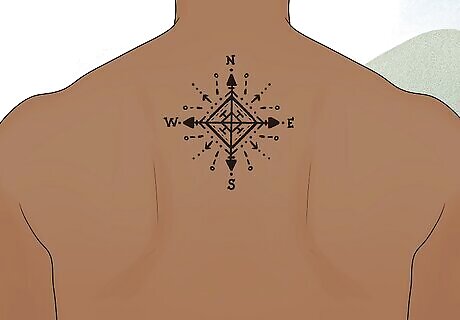
Moral or spiritual guidance Sometimes, the journeys we take happen in our own minds and hearts instead of out in the physical world. A compass can metaphorically “point you” in the right direction when it comes to discovering who you really are or deciding what the right thing to do is. It can also mean that your family and relationships, morals, or another belief system make up your guiding principles.

Independence The compass represents finding your own path in life, even if it means going against the grain or choosing yourself and your needs over what other people tell you that you should want. It’s a symbol of standing your ground and following your inner code. We all march to the beat of our own drum; let your inner compass show you which direction to march!

Protection Historically, sailors and navy personnel got compass tattoos for good luck at sea. Not only was the compass a symbol of not getting lost on the open ocean, but of returning home alive from long journeys in potentially dangerous conditions. A compass tattoo can be a potent symbol to safeguard you from taking the wrong path in life and finding your way home to the places and people you love.

Finding the right direction in life Have you ever felt lost or directionless? The compass symbol can mean that you’ve found inner clarity or are finally pursuing your life’s purpose. Or, it can be a reminder to keep searching for your guiding light. After all, you’re never too old or wise to learn something new or find a new passion to give your life a new direction!
Compass Tattoo Design Ideas

Compass rose (nautical star) The compass rose is probably the most iconic compass design. Its pointed petal- or star-shaped points point in the cardinal directions (North, South, East, and West) and often the intermediate points between them (Northwest, Northeast, Southwest, and Southeast). Traditionally, a compass rose or nautical star tattoo is worn so that sailors will always find their way back to port.
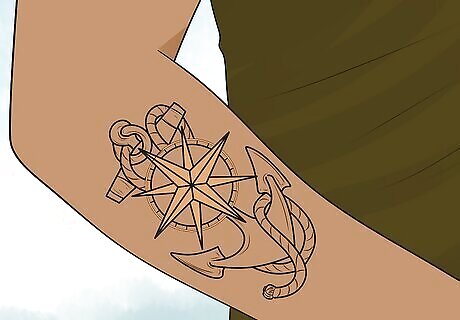
Compass with an anchor The anchor was traditionally tattooed to show someone who had sailed across the Atlantic, but now it’s often the first nautical tattoo new sailors get and is like an initiation into naval service. A compass paired with an anchor (sometimes hanging from or below the compass) is popular since both symbols represent life at sea. If you’ve served in the Navy, have experience sailing, or simply feel pulled to the sea, this design might be for you!
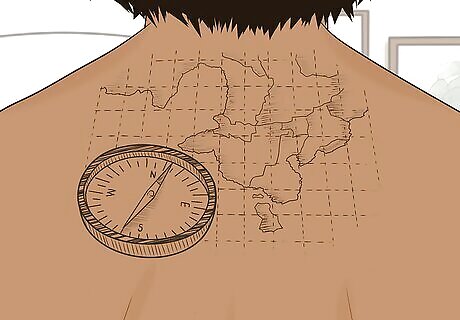
Compass laid over a map If you love to travel and explore, consider a compass laid over a map of the world (or even a specific continent, country, or other area that’s meaningful to you). Choose this design to express your wanderlust and nod to the original use for a compass. Consider whether you want the map or compass to be the feature of the tattoo. If you want the compass “on top” of the map, for example, you might tattoo it with thicker lines than the map.
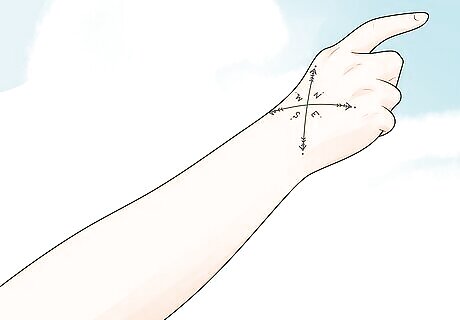
Plain compass arrows Remove the circle from the compass and display just the arrows and needle. Keep a traditional look, similar to a compass rose, or get creative! For example, you could substitute the arrows with other figures, like pointing fingers or tree branches.
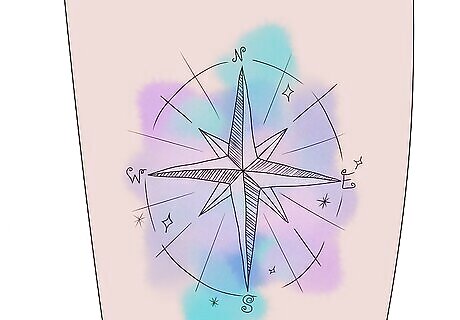
Compass with a watercolor background A soft palette of blended colors with an undefined edge makes your compass look like it’s inked on canvas rather than skin. This is a great way to “soften” the compass, since many designs use black lines, geometric shapes and angles, and pointed arrows. Which colors you choose and where you put them is up to you! For example, you could choose a pastel theme with a different color placed in each quadrant of the compass. Allow your colors to bleed together at the edges and appear undefined. This contrasts with the compass’ sharpness.

Viking compass (Vegvísir) The Vegvísir symbol is known as a talisman of protection to help travelers find their way home in bad weather or unfamiliar terrain. It features 8 rune-like symbols arranged like the directions of a compass and is often attributed to Viking culture. However, there’s not much evidence that the Vegvísir is authentically Viking. Its first appearance was in 1860—about 800 years after the end of the Viking age. Nevertheless, it’s still an epic and recognizable design that many people find meaningful today!

Simple or minimalist compass Who says you need a full compass rose (or even a circular design) to tattoo a recognizable compass? You could just design 2 intersecting lines with arrows on the ends to represent the cardinal directions. Or, to keep things super minimalist, try a single arrow pointing North or whichever direction is most meaningful to you.

Compass with quotes Add text to or around your design to personalize it even more. You could add the name of a loved one by the compass needle, a phrase from your favorite book, or a saying about travel or adventure that resonates with you. Some popular ideas include: “Not all who wander are lost.” “Before you ask which way to go, remember where you’ve been.” “To travel is to live.”
Which direction should the compass point?
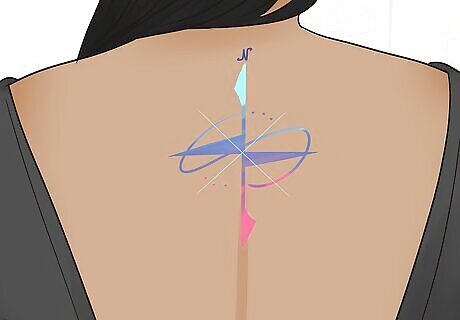
Aesthetically, compass tattoos look great with North pointing upward. This makes the compass align with your body; North is upward, toward your head, and South is downward toward your feet. This orientation also makes it easy to show off your tattoo to others. The compass arrow can point any direction you like. Or, if you want it to feel like you’re holding or “using” the compass (like if it’s inside your wrist), you might have North pointing downward so it appears upright when you raise your arm to look at it. Ultimately, the compass tattoo can point or face any direction you like! Having North point sideways or any other way subverts expectations and makes the tattoo more unique and personal to you.
Compass Tattoo Placement Ideas
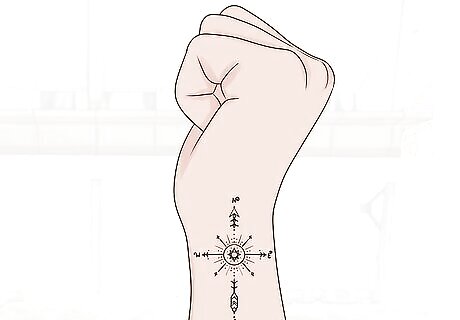
A compass tattoo looks tasteful nearly anywhere you put it. Just like the compass encourages you to find your own way in life, where you place your tattoo is entirely up to you! If you’re feeling stuck, though, here are some of the most common places for compass tattoos: Forearm: This is the most popular spot for compasses, especially if you have a long design. The forearm also doesn’t show super visible signs of aging compared to other body parts. Calf: The calf is also popular for long compass designs. It’s also an easy spot to hide your tattoo with tall socks or pants when needed. Shoulder: Shoulders are great for larger compass designs, especially if they’re round in shape. Back: A single compass needle going up the spine is an edgy and popular look. Or, if your design is very large, your back gives you plenty of canvas to bring your design to life. Wrist: Put small and simple designs here, since dense images and thick lines may blend together over time. The wrist is also a very visible spot and a good choice if you want to see your compass tattoo for guidance often.
Compass Tattoo Origins
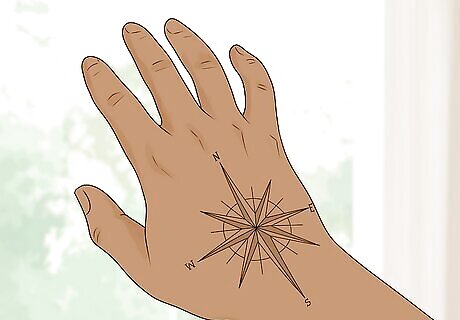
Compass tattoos originated with European sailors in the 16th century. As European seafaring expanded across the globe, sailors often got tattoos as souvenirs of their travels or as talismans against bad luck. The compass symbol was often used to aid navigation or remind sailors of their homeland, and tattoos in general were sometimes considered an “initiation” into the sailor life. Though Europeans may have started the compass tattoo trend, the first magnetized compass is thought to have been invented in China in the 11th century. Compasses spread to Europe in the following centuries. The now well-known compass rose design first appeared in Europe during the Renaissance.




















Comments
0 comment